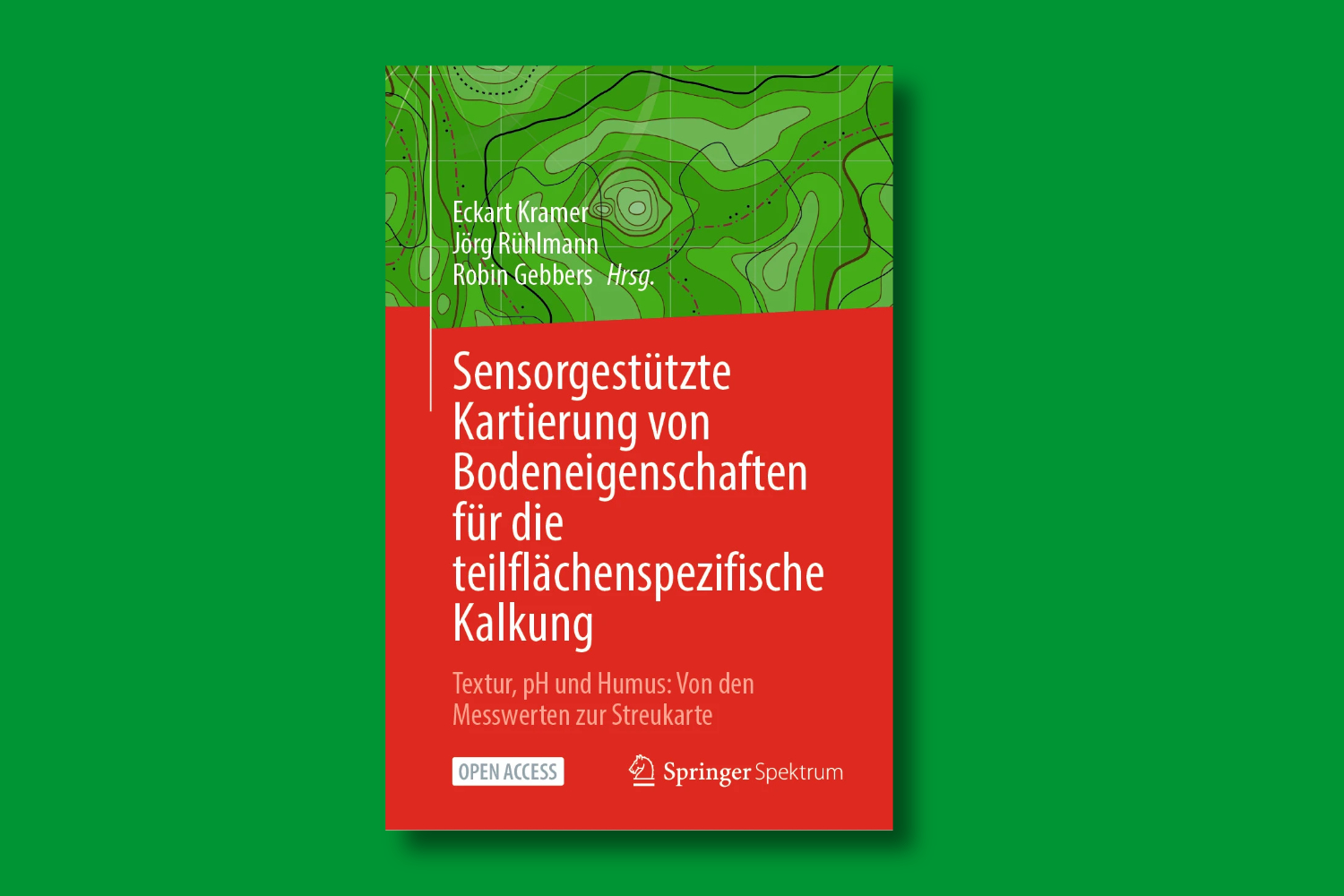New Handbook on Precision Liming Published
Research Outcomes from the pH-BB Project Incorporated into New Handbook
A new open-access book has been published as part of the “pH-BB – Precision Liming in Brandenburg” research project, providing detailed insights into sensor-based mapping of soil properties for site-specific liming. Dr Jörg Rühlmann, research group leader at the Leibniz Institute of Vegetable and Ornamental Crops (IGZ), emphasizes the significance of the publication: "We are very pleased that key results from the pH-BB project have been published in the form of this open-access book. For the first time, essential soil characteristics for managing soil acidity, such as texture, organic matter, and pH, have been captured using sensors."
By combining commercially available sensors with the Geophilus sensor system, jointly developed by IGZ and the University of Potsdam, high-resolution soil texture maps were created. These maps offer farmers a valuable tool for generating site-specific nutrient application maps. The use of these precise application maps not only increases nutrient efficiency, but also reduces nutrient losses to the environment, providing economic benefits for agricultural businesses.
This book is a valuable contribution to agricultural practice, showcasing numerous examples of how precision liming with innovative sensor technologies can lead to more sustainable and efficient outcomes. The book addresses service providers, interested farmers and students as an introduction to the subject.
Further Information:
- Book (Open Access): "Sensorgestützte Kartierung von Bodeneigenschaften für die teilflächenspezifische Kalkung. Textur, pH und Humus: Von den Messwerten zur Streukarte", E. Kramer, J. Rühlmann, R. Gebbers (editors), Springer; https://doi.org/10.1007/978-3-662-69174-8
- pH-BB Project
- Geophilus Sensor System
- IGZ Research Group “Next Generation Horticultural Systems - Open Field Horticultural Systems”
